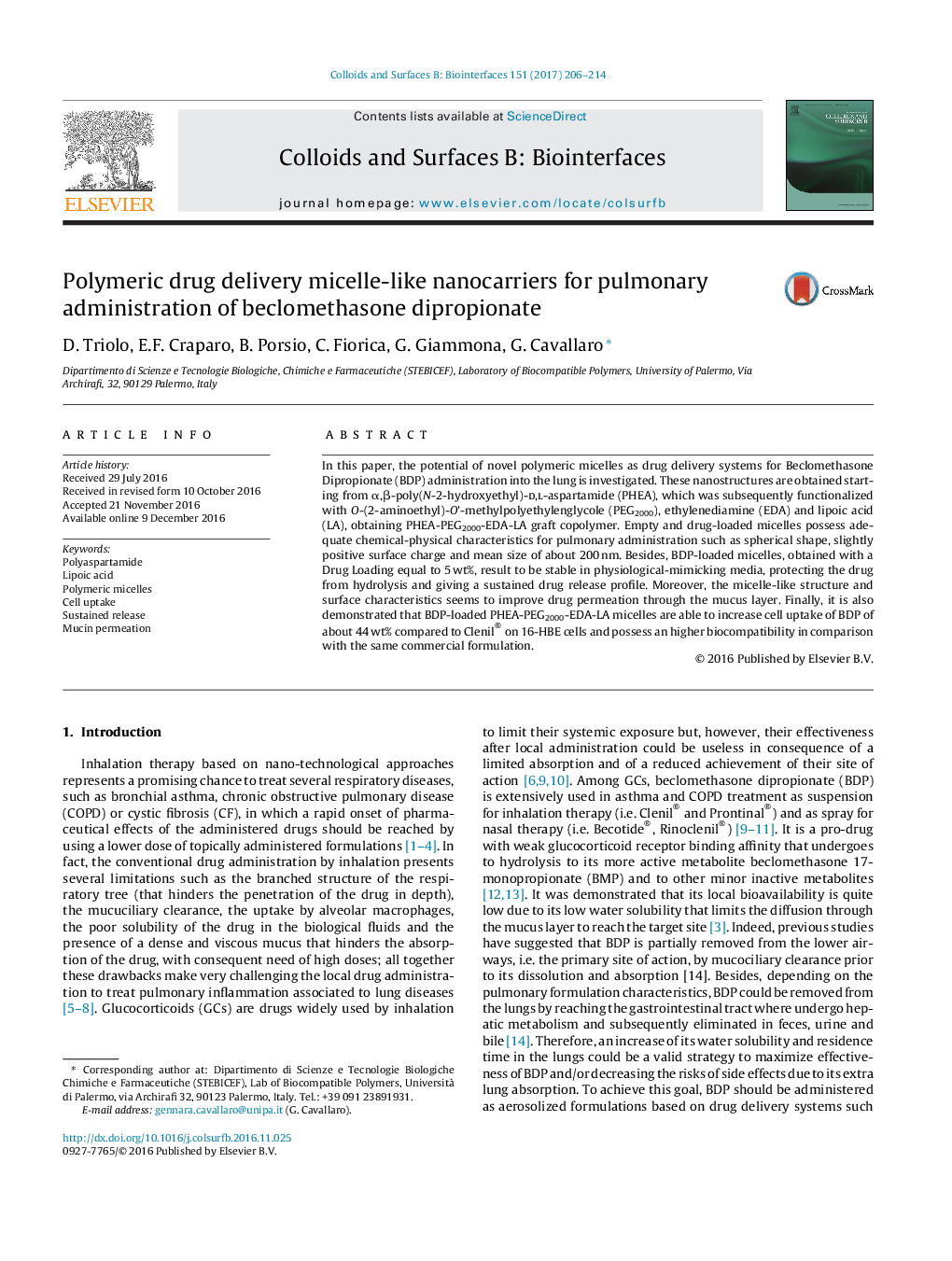| Article ID | Journal | Published Year | Pages | File Type |
|---|---|---|---|---|
| 4983226 | Colloids and Surfaces B: Biointerfaces | 2017 | 9 Pages |
â¢Beclomethasone dipropionate (BDP)-loaded PHEA-PEG2000-EDA-LA micelles were realised.â¢These micelles show proper chemical-physical characteristics for lung administration.â¢These micelles were able to permeate through the mucus layer into the lungs.â¢In vitro experiments demonstrate that these micelles result highly biocompatible.â¢These micelles increase drug uptake on 16-HBE compared to Clenil®.
In this paper, the potential of novel polymeric micelles as drug delivery systems for Beclomethasone Dipropionate (BDP) administration into the lung is investigated. These nanostructures are obtained starting from α,β-poly(N-2-hydroxyethyl)-d,l-aspartamide (PHEA), which was subsequently functionalized with O-(2-aminoethyl)-O'-methylpolyethylenglycole (PEG2000), ethylenediamine (EDA) and lipoic acid (LA), obtaining PHEA-PEG2000-EDA-LA graft copolymer. Empty and drug-loaded micelles possess adequate chemical-physical characteristics for pulmonary administration such as spherical shape, slightly positive surface charge and mean size of about 200 nm. Besides, BDP-loaded micelles, obtained with a Drug Loading equal to 5 wt%, result to be stable in physiological-mimicking media, protecting the drug from hydrolysis and giving a sustained drug release profile. Moreover, the micelle-like structure and surface characteristics seems to improve drug permeation through the mucus layer. Finally, it is also demonstrated that BDP-loaded PHEA-PEG2000-EDA-LA micelles are able to increase cell uptake of BDP of about 44 wt% compared to Clenil® on 16-HBE cells and possess an higher biocompatibility in comparison with the same commercial formulation.
Graphical abstractDownload high-res image (166KB)Download full-size image
